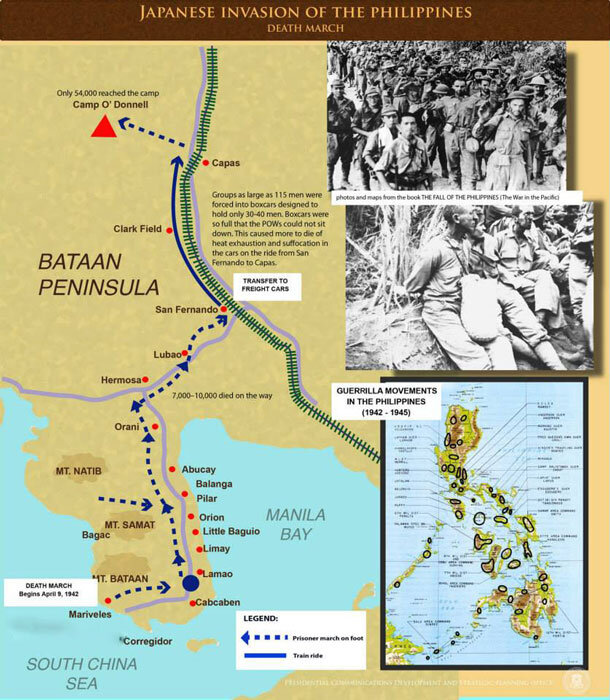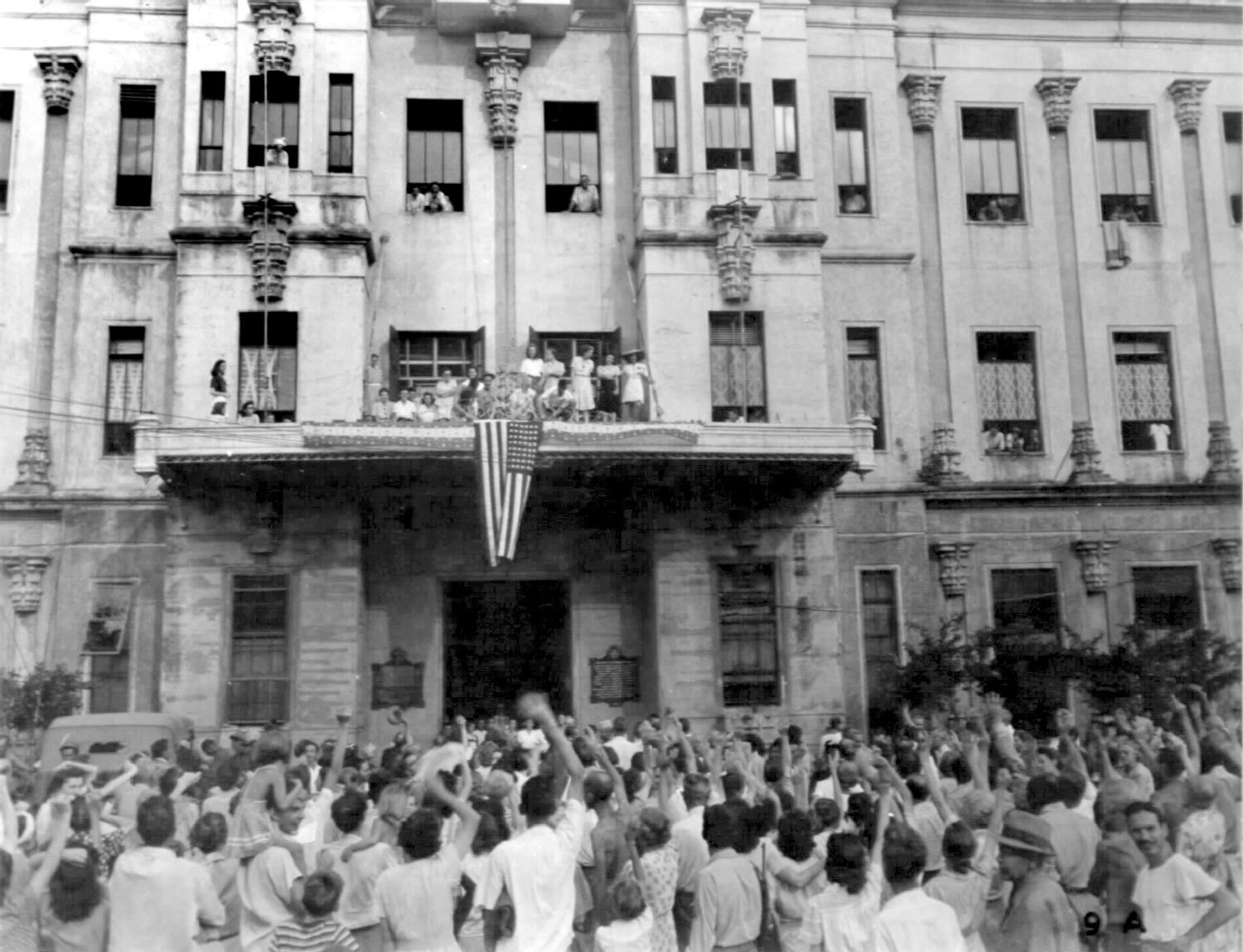World War II in the Philippines - 75 Years After
/75 Years Ago: War and Remembrance
President Franklin D. Roosevelt told the Filipinos on December 28, 1941, “In this great struggle of the Pacific, the loyal Americans of the Philippine Islands are called upon to play a crucial role. The people of the United States will never forget what the people of the Philippine Islands are doing this day and in the days to come. I give to the people of the Philippines my solemn pledge that their freedom will be redeemed. The entire resources in men and material of the United States stand behind that pledge."
At the same time, the Arcadia Conference was taking place in Washington, DC. Winston Churchill had crossed the Atlantic to ensure that the United States would fulfill the terms of Rainbow Plan 5, the Allied War Plan developed during the American British Dutch Australian (ABDA) conversations from January to April 1941, based on a Europe First Policy.
Winston Churchil and Franklin D. Rooseveltl
The U.S. Army Forces in the Far East (USAFFE), created on July 26, 1941, consisted of about 100,000 Filipinos and 20,000 American soldiers. Their main task was to perform a delaying action on the mouth of Manila Bay. Not a month had passed when they were placed on half rations. Despite promises by its Commanding General Douglas MacArthur that thousands of troops and hundreds of planes were being dispatched, no help ever came. The majority of the troops were suffering from disease and starvation when they were made to surrender on April 9, 1942.
USAFFE, 41st Regiment, 3rd Battalion
They were forced to walk to their prison camp some 65 miles away under extreme tropical conditions with no provisions for food, water, shelter or medicine. Those who could no longer go on were beaten, bayoneted, shot and even beheaded by their Japanese captors. Thousands died in what became known as the Bataan Death March. In one case, a group of 350 soldiers who had just surrendered were herded to a river and massacred. But despite the agony of defeat, the USAFFE soldiers delayed the Japanese Army’s 50-day timetable by holding on to the Bataan Peninsula for 99 days.
The Capture of Manila
The Bataan Death March
Although Japan granted the Philippines its “independence” in 1943 as part of its Greater East Asian Co-Prosperity Sphere program, the Filipinos suffered greatly from atrocities inflicted not only on suspected guerrillas, but also on many innocent civilians. Torture, rape, pillage, and massacres, sometimes of entire villages, took place all over the country. The Kempei Tai (Japanese military police) used the method of Zonification, rounding up suspected insurgents with the help of Filipino collaborators called Makapilis, to identify them. It was the same system that was used during the occupation of Manchuria and more frequently during the Second Sino-Japanese War. When the liberation of the Philippines commenced on October 20, 1944, Zonification was used with more frequency and impunity.
When the First Cavalry arrived in Manila on February 3, 1945, it proceeded to Santo Tomas University north of the Pasig River, where 3,785 Allied civilian prisoners of war had been kept for over three years. While the American troops were met on the streets by jubilant civilians, what happened next, south of the river where the Japanese soldiers were entrenched, was the systematic slaughter of men, women, and children. The battle became one of the worst urban battles during WWII, resulting in the indiscriminate deaths of 100,000 people.
The Rescue of Allied POWs in Santo Tomas
In Los Baños in the neighboring province of Laguna, elements of the 11th Airborne, in tandem with many Filipino guerrillas, rescued 2,132 Allied civilian prisoners on February 23, 1945. That very same night after the rescuers departed, the Japanese soldiers slaughtered approximately 1,500 civilians. The same scenario occurred throughout the country.
It was not until June 14, 1945, when the guerrillas of the U.S. Army Forces in the Philippines, North Luzon (USAFIP, NL) were able to plant the hastily-improvised flag on the steep ridge near Bessang Pass in Northern Luzon. They led the intense four-month battle for the Pass, supported by elements of the U.S. Sixth Army’s 33rd Division, Fifth U.S. Air Force and Marine Aircraft Group 24. Even then, General Tomoyuki Yamashita, Commander of the Japanese 14th Army in the Philippines, who earned the moniker “Tiger of Malaya” for his swift conquest of Malaya and Singapore, did not surrender until September 2, 1945.
The Filipino troops made up seven-eighths of the main line of resistance during the Battle of Bataan. Thousands of Filipinos were used by the U.S. Sixth and Eight Armies during the liberation of the Philippines. Most of the fighting and the dying were done by Filipinos; but on February 18, 1946, the U.S. Congress passed the First Supplemental Surplus Appropriation Rescission Act, which included a rider that deemed the service of the Filipinos during WWII as not active, thereby excluding them from claiming veterans’ benefits.
Through the years, health benefits, citizenship and a one-time compensation were slowly given to the veterans, but only a very small fraction of them were able to avail of these. In 2016, Congress passed PL 114-265, which awarded the Congressional Gold Medal to the Filipino veterans; but the 1946 Rescission Act was never repealed.
The Congressional Gold Medal for Filipino Veterans
The toll of WWII has transcended several generations, but in order to understand its ramifications, its lessons must be taught to the younger generation who will become the leaders of tomorrow so that they could understand the great sacrifices of 15 million soldiers and 45 million civilians who died and 25 million who were wounded. It is incumbent upon us to do so if we are serious about protecting our children from the horrors of future wars.
Originally published by the National WWII Museum on Sept. 1, 2020. Reposted with permission from the author. https://www.nationalww2museum.org/war/articles/liberation-of-philippines-cecilia-gaerlan
Cecilia I. Gaerlan is the Executive Director of Bataan Legacy Historical Society (BLHS). She founded the organization to address the lack of information about the role of the Filipinos during World War II in the Philippines and to seek justice for the Filipino veterans of the U.S. Army Forces in the Far East (USAFFE) whose veterans’ benefits were rescinded by the First and Second Rescission Acts passed by the U.S. Congress in 1946. BLHS worked successfully with the California Department of Education to include WWII in the Philippines in the Grade 11 U.S. History Curriculum Framework (Chapter 16) which was approved by the State Board of Education on July 14, 2016. She was inspired by her father, Luis Gaerlan, Jr. a Filipino veteran (41st Infantry Regiment) of WWII and a survivor of the Bataan Death March. For more information, please visit www.bataanlegacy.org.
More from Cecilia Gaerlan









